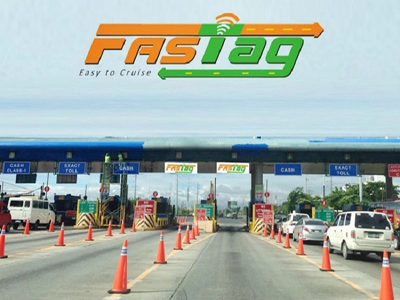The central and state governments should seriously consider special packages of incentives and concessions ahead of festivals. India’s festivals – be it Holi, Diwali, Eid, or Christmas – are not just celebrations of joy but also powerful engines driving the country’s economic growth. These vibrant events sustain the momentum of India’s market economy, making government support for festivals essential due to their multifaceted impact.
Festivals boost local economies by encouraging spending in sectors like hospitality, retail, and transportation. Businessman Rajiv Gupta explains, "Government investment in festivals creates both temporary and permanent jobs within these industries. Sales of local businesses increase, allowing them to thrive and contribute to the broader market economy. This surge in economic activity generates additional tax revenue, which can be reinvested in community services and infrastructure." Additionally, Hindu festivals are a boon for sweet shops. Dining out has now become an essential trend.
Read in Hindi: विकास, एकता और समृद्धि को बढ़ावा देते हैं भारत के उत्सव
The tourism sector is another significant beneficiary of festivals, attracting visitors from outside the region. This influx generates additional income for local attractions and accommodations, further enhancing economic benefits.
Hotelier Sandeep says, "Festivals also showcase local art, food, and culture, promoting regional identity and pride, which fosters long-term community engagement and development."
Social activist Mukta Gupta emphasizes that government support ensures festivals are inclusive and accessible to all, enhancing social harmony and quality of life. She adds, "By funding these events, governments not only stimulate economic prosperity but also promote diversity, creativity, and cultural exchange."
Business leaders in Agra believe that government support for festivals drives economic growth, supports local businesses, attracts tourism, and strengthens community ties, resulting in a vibrant and resilient economy.
Public commentator Prof Paras Nath Choudhary elaborates, "India, a country of diverse cultures, religions, and traditions, celebrates numerous festivals throughout the year. These events are not only opportunities for spiritual and cultural rejuvenation but also serve as significant economic drivers. The festival economy acts as a booster shot for the country’s financial health, creating a ripple effect that benefits various sectors and sustains market momentum. From small-scale artisans to large industries, festivals promote consumerism, circulate wealth, and counteract recessionary trends."
Cooperative economics expert Ajay Jha highlights the cyclical nature of India’s festival economy. "Hindus, who form the majority of the population, celebrate numerous festivals throughout the year, such as Diwali, Holi, Navratri, Dussehra, and Makar Sankranti. Each festival brings a spike in consumer spending, from buying clothes and jewellery to sweets, decorations, and gifts. This cyclical spending ensures that the market never faces a downturn, keeping businesses running and creating employment opportunities."
Muslims, Christians, Sikhs, and other minority communities also contribute significantly to the festival economy. Festivals like Eid, Christmas, Guruparv, and Parsi New Year boost economic activity, with a surge in demand for festive foods, attire, and decorations in the markets. "This diversity ensures that economic benefits are distributed across communities and regions, promoting inclusivity and shared prosperity," says socialite Padmini Aiyar. "This is the beauty of India – unity in diversity."
Fairs, Kumbh Melas, and regional events further enrich India’s cultural landscape. Banking expert TV Natarajan says, "Local businesses, transport services, and the hospitality industry thrive during such events, leading to temporary but significant economic boosts. Regional festivals like Pongal in Tamil Nadu, Bihu in Assam, and Onam in Kerala contribute to local economies by promoting traditional crafts, cuisines, and art forms."
Hindu weddings, often grand events with substantial spending, further amplify the festival economy. From wedding attire and jewellery to catering and venue decorations, weddings generate significant revenue for various industries. According to management consultant Prem Nath Agrawal, "The wedding season, which often coincides with the festival season, creates a synergy between festivals and marital celebrations."
Small-scale industries and artisans also benefit from the festival economy. During Diwali, potters, firework makers, and diya manufacturers see a surge in sales. Similarly, during Eid, tailors and bakers witness increased demand for festive clothing and sweets. This seasonal demand ensures that traditional industries remain viable, employing millions.
India’s festival economy is a crucial component of the country’s financial ecosystem. It not only promotes consumerism and wealth circulation but also strengthens cultural preservation and social unity. Through festivals, India not only celebrates its rich heritage but also builds a strong and resilient economy.


















Related Items
BSNL offers ‘Diwali Bonanza’ with free mobile services for a month
Balanced population growth accelerated national development
Private sector has become the beating engine of India’s economy